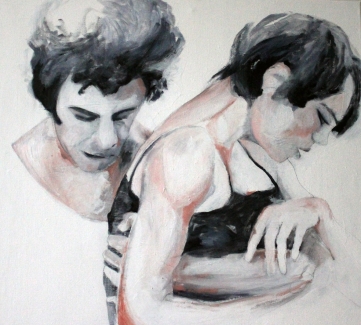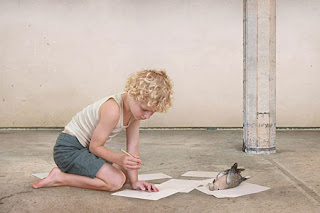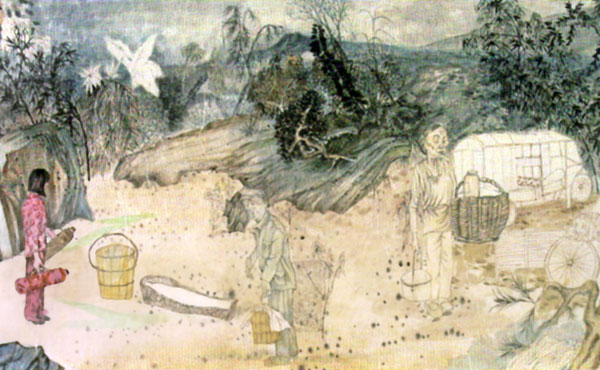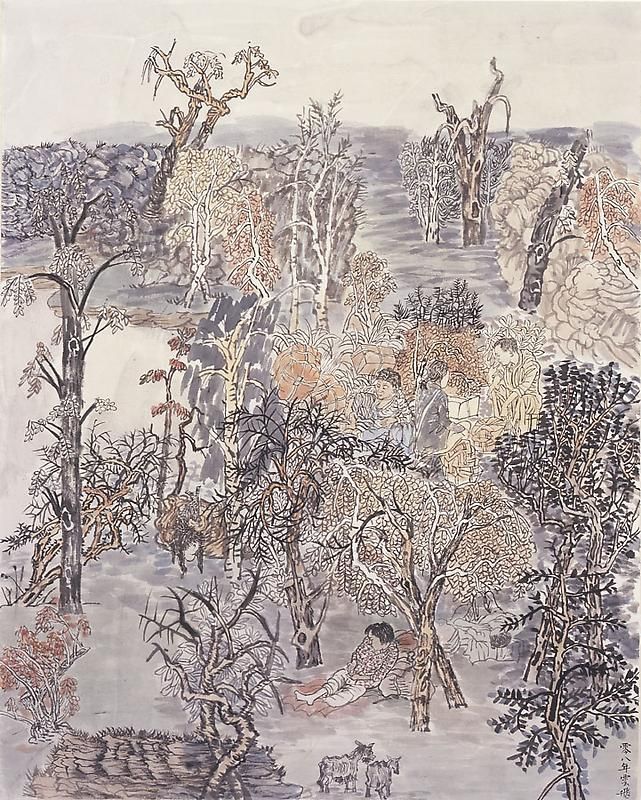- Can you tell us something about yourself? When did you discover your passion for art?
Apart from the usual school education I studied visual communication at the University of Applied Sciences in Dortmund achieving a diploma as a photo designer. The wish to study photo design arose in the late 80th. With about 16 years I started to photograph everything with my first Nikon SLR. Initially the movie "Under fire" with Nick Nolte started my fascination for being a photographer and I guess the idea of becoming a war photographer was kind of interesting. So, after I felt comfortable with my camera and composing images in the view finder I concentrated on street photography, for sure influenced by the Magnum book "Zeitblende" (In our time). After my school and civil service time I started to study in Dortmund. While the fascination for street and documentary photography remained in the first years, I soon realized that there are other fields in photography which are also interesting and fascinating. Influenced by one of my professors I started to work more and more conceptual. A series of images replaced THE image, photographs started to interact with themselves. Towards the end of my studies my relationship to photography has changed considerably. Especially my diploma which I shot in the film sets of Germany TV soap operas, the zoo series and former series manifested my interest in the imaginary. From being a photographer who tried to capture the real I evolved to creating the fictitious.Looking back to when my fascination for the visual arts started, I stumble across all the fabulous children's books my parents presented my with. I especially liked one where a boy spends his vacations with his grandfather in the woods, as the boy is in the possession of a magnifying glass which permits him to discover what formerly has been invisible to the eye like ants etc. The step from the magnifying glass to the camera lens seems to be a logical consequence.
- How do you create your works?
That really depends. In the late 90th I started again to experiment with 3D computer graphics after initial contact in the 80th. During my studies I learned more and more about cgi and solved some of the photographic tasks by using computer graphics instead of shooting something with a camera. For my private and professional work I like to use both sides. Real photography and computer graphics. One should always use the best from each world and usually the images combining these elements in the most exquisite way are the most stunning ones. While computers and software get more powerful each year, the ability to create photo-realistic imagery is getting easier. Luckily the ability to create good images is attached to individuals and their senses. So technology isn't everything. In case of the cg animals, as soon as the decision has been made to create them via the computer, the research starts. Although the time is very limited to get familiar with your subject, it is probably the most interesting one in a project as you are usually confronted with something unknown. Getting the insight into something you only know by its surface is a little miracle by itself, similar to the making of a movie or a backstage pass. Realizing how an organism "works" is just beautiful. Afterwards the hard and tedious work of rebuilding something created by nature over thousands of years begin. Especially fur and feathers have the ability to make your day. Luckily in the last years there have been great enhancements supporting the creative to recreate these surfaces.
- What are your main sources of inspirations?
I guess everything. Years ago while still growing up Monty Python totally spoiled my sense of humour. Also I can't blame Palin, Cleese and the rest of the bunch for everything, I guess since then I see the world, my environment and other people through pythonesque spectacles. In some way I try to see the weird, humorous and bizarre behind the surface. Sometimes this will indeed end in something funny like the octopus in the bath tub, the fat horse and fat giraffe or the Mückofant. On the other hand there are images like the ones from zoological gardens which are far more subtle. While still being strange environments, like a Terry Gilliam movie, there is also the reference to the society who builds these environments in resemblance to nature or the idealised conception of nature. So, in the end I need to stay open minded, as there is not a certain daytime or activity which is connected to the birth of ideas. A colour, a word, a face, a movie. Anything can trigger something in your brain which results in a picture that needs to be created.
- What is your definition of art?
I never tried to come up with a description of what is art. The strange thing in the English language is the way the word art is used. Everybody who is involved with computer graphics calls him-/herself cgi artist. While people do so, there are only a few who's work I would call artistic or artful. In German the word "Künstler" (artist) describes a far more isolated/exqusite kind of person/profession. So in English the usage of the word artist and art is highly inflationary, making the introduction of the word "fine art" necessary. Finding a definition of what is art is probably as impossible as coming up with a guide to identify a great photo. Being a photographer for about 25 years I "earned" the ability to tell what is and what isn't. As there will be always others who will contradict my judgement regarding a certain image, the process to distinguish between art, simple images and crap is a highly personal one. Sometimes personal interests will lead persons to call certain things a piece of art, as it is in their benefit to do so. Other times somebody will give you a well prepared explanation why something is art, making it hard or tedious to convince the person of the opposite. So in the end the state of an object or event whether it is art or not depends on the arrogance of an individual to say so and others to agree for what ever reason this might be. Probably this is the very essence of art, that it withdraws itself from an unanimous appraisal, judgement and classification and arouses contradiction.
- Ci puoi raccontare qualcosa su di te? Quando hai scoperto la tua passione per l’arte?
A parte la solita educazione scolastica, ho studiato comunicazione visiva all’università di scienze applicate in Dormund, ottenendo il diploma in photo designer. Il desiderio di studiare photo design è nato alla fine degli anni ottanta. Quando avevo circa sedici anno ho iniziato a fotografare tutto con una Nikon SLR. Inizialmente il film “Under fire” con Nick Nolte ha fatto nascere il fascino per la fotografia. Dopo che ho preso manualità con la macchina fotografica e a comporre immagini, mi sono concentrato sulla fotografia per strada, sicuramente influenzato dal libro pubblicato da Magnum "Zeitblende" (Nel nostro tempo). Dopo la scuola e il servizio civile ho iniziato a studiare alla Dortmund. All’inizio continuavo a essere affascinato dalla fotografia documentaristica, successivamente però ho scoperto che non era l’unico ambito della fotografia ad interessarmi. Seguendo uno dei miei professori ho iniziato a fare lavori più concettuali. Alla fine degli studi il mio rapporto con la fotografia è cambiato considerevolmente. Ho iniziato a fare il fotografo per i set cinematografici e la tv. Così da fotografo del reale ho iniziato a creare la finzione. Ripensando a quadno è iniziata la ma passione per l’arte visuale mi sono ricordato del libro che i miei mi avevano preso quando ero bambino. Una delle storie raccontava di un ragazzo che passava le vacanze a camminare per il bosco con il nonno, con una lente magica che gli permetteva di vedere le cose invisibili. Dalla lente alla macchina foto il passaggio sembra ovvio.
- Come crei i tuoi lavori?
Questo dipende. Alla fine degli anni 90 ho iniziato a sperimentare con la grafica 3D dei computer dopo averli conosciuti negli anni 80. Durante gli studi ho imparato a usare la manipolazione digitale. Per i miei lavori mi piace usare sia la fotografia “reale” che la grafica digitale. Uno dovrebbe sempre usare il meglio da entrambi, le immagini che combinano gli elementi di queste tecniche sono favolose. I pc e i software diventano ogni anno più potenti e il modo di creare immagini foto-realistiche si fa via via più facile. Per fortuna l’abilità a creare immagini di qualità è prerogativa degli individui e delle loro capacità. La tecnologia non è tutto. Nel caso della creazione di animali, appena la decisione di crearli tramite pc viene presa, inizia la ricerca. Nonostante il tempo per prendere confidenza con il soggetto sia molto limitato, è probabilmente la parte più interessante perchè bisogna confrontarsi con qualcosa di sconosciuto. Si tratta di entrare dentro a qualcosa che si conosce solo superficialmente, è simile a girare un film. Realizzare come un organismo lavora è semplicemente stupendo. Dopo viene la parte difficile e noiosa: ricreare qualcosa costruito dalla natura migliaia di anni fa. Soprattutto le pellicce e le piume sono difficili da riprodurre. Per fortuna il progresso della tecnologia ha permesso notevoli miglioramenti nella riproduzione di queste superfici.
- Quali sono le tue principali fonti d’ispirazione?
Immagino tutto. Anni fa quando stavo ancora crescendo Monty Python ha completamente rovinato il mio sense of humor. Non posso nemmeno incolpare Palin, Cleese e il resto del gruppo per tutto, immagino che da allora vedo il mondo, l’ambiente e le persone che mi circondano come se fossero uno spettacolo “pythonesque”(di Monty Python, ironia intellettuale). In un certo modo cerco di cogliere il diverso, l’ironico e il bizzarro oltre la superficie. A volte questo può finire con qualcosa di veramente buffo, come il polipo nel tubo del bagno, il cavallo grasso e la giraffa grassa. Altre invece, come le immagini per il giardino zoologico, viene fuori qualcosa di più sottile. Nelle opere l’ambiente appare sempre strano, come un film di Terry Gilliam, e c’è sempre un riferimento alla società che ha creato questi ambienti che assomigliano alla natura o al concetto idealizzato di natura. Cosi, alla fine devo sempre avere la mente aperta, perchè non c’è un momento della giornata o un’attività che è connessa alla nascita di idee. Un colore, una faccia, una parola, un film. Tutto può essere fonte d’ispirazione.
- Qual’è la tua definizione di arte?
Non ho mai provato a descrivere cos’è l’arte. La cosa strana nella lingua inglese è come viene usata la parola arte. Tutti coloro che lavorano nella computer graphics si chiamano “cgi artist”. Di tutte queste persone ce ne sono solo alcun che definirei artisti. In tedesco la parola "Künstler" (artista) descrive una categoria di persone più ristretta. In inglese l’uso della parola arte o artista è molto inflazionato, questo ha reso necessaria l’introduzione dell’espressione “fine art” (belle arti). Trovare una definizione di cos’è l’arte è quasi impossibile, come scrivere una guida su come riconoscere una grande fotografia. Facendo il fotografo da quasi 25 anni ho imparato a dire cos’è e cosa non è. Anche se ci sarà sempre qualcuno che mi contraddirà. Il processo per distinguere tra arte e semplici immagini è molto soggettivo. Probabilmente lo stato di un oggetto come “arte” dipende dall’arroganza di un individuo di affermare questo e di altri di essere d’accordo con la sua sentenza. Forse questa è la vera essenza dell’arte, che da sola si ritira da una valutazione, un giudizio e una classificazione unanime, mentre cerca di creare contraddizioni.
For further information see also
http://www.thomasmangold.com/.
All the images posted here are Thomas Mangold’s works.

















































